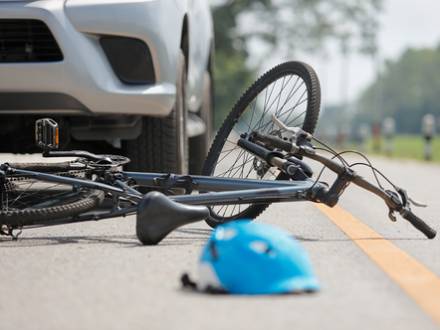Who Is at Fault in a Car Accident Involving a Bicycle in Illinois?
 When a car and a bicycle collide, the injuries can be particularly severe for the cyclist. Determining who is at fault is not always simple. Illinois law requires all road users, including drivers and cyclists, to follow traffic rules. Whether you were hit while riding your bike or while driving your vehicle, it is important to understand how fault is determined. A skilled Chicago, IL bicycle accident attorney can help guide you through your rights and options.
When a car and a bicycle collide, the injuries can be particularly severe for the cyclist. Determining who is at fault is not always simple. Illinois law requires all road users, including drivers and cyclists, to follow traffic rules. Whether you were hit while riding your bike or while driving your vehicle, it is important to understand how fault is determined. A skilled Chicago, IL bicycle accident attorney can help guide you through your rights and options.
How Does Illinois Law Govern Auto Accidents?
Illinois law treats bicycles as vehicles when they are operated on public roads. According to 625 ILCS 5/11-1502, cyclists are subject to the same rights and duties that apply to drivers. This includes obeying traffic signals, yielding when required, and riding in the same direction as vehicle traffic.
The state follows a fault-based system, meaning the person responsible for causing the accident is also responsible for the resulting damages. These damages may include medical expenses, lost wages, and pain and suffering. If you are both at fault for the accident, Illinois uses a modified comparative negligence rule under 735 ILCS 5/2-1116. This means you can recover damages as long as you are not more than 50 percent responsible for what happened. However, your compensation will be reduced by your share of the blame.
This principle of shared fault often applies in bicycle-car accidents. A recent example occurred in May 2025, when an 18-year-old bicyclist riding a Divvy e-bike was killed after entering Michigan Avenue against a red light. The driver of an SUV, who had a green light, was still cited for failing to reduce speed to avoid the crash. This tragic incident highlights how fault may be split between both parties, depending on the circumstances.
How Do You Determine Who Is at Fault in a Bicycle-Car Accident?
Assigning fault in a bicycle-car accident often depends on the circumstances surrounding the crash. Investigators will review evidence such as photos, witness accounts, traffic camera footage, and police reports. They will consider whether either party broke traffic laws or failed to act with reasonable care. For example, if the driver failed to yield when turning, they may be at fault. If the cyclist was riding against traffic or ignored a red light, they may share responsibility.
If the diver passed the cyclist too closely, this may also support a fault claim. Under 625 ILCS 5/11-703, drivers must leave at least three feet of space when overtaking a bicycle. If a driver violates this rule and a collision results, they may be considered negligent.
Do You Have To File a Lawsuit To Recover Compensation for Your Losses?
Filing a lawsuit is not always required. Many accident victims start by filing a claim with the at-fault party’s insurance provider. If the insurer offers a fair settlement, the matter can be resolved without court involvement. However, if the offer does not fully cover your losses or if liability is disputed, a lawsuit may be necessary. In Illinois, you typically have two years from the date of the accident to file a personal injury lawsuit. Acting quickly ensures that your evidence remains fresh and your legal options remain open.
Schedule Your Free Consultation With a Chicago, IL Auto Accident Attorney
At Winters Salzetta O'Brien & Richardson, LLC, our attorneys draw on decades of experience representing people injured in serious traffic accidents. Our firm has experience successfully recovering compensation in cases involving vehicles colliding with pedestrians and other non-drivers. If you suffered injuries in a bicycle or car accident, a knowledgeable Chicago, IL car accident lawyer at our firm is here to protect your rights. Call 312-236-6324 today to schedule your free consultation.





 312-236-6324
312-236-6324




 312-236-6324
312-236-6324 312-236-6426
312-236-6426


